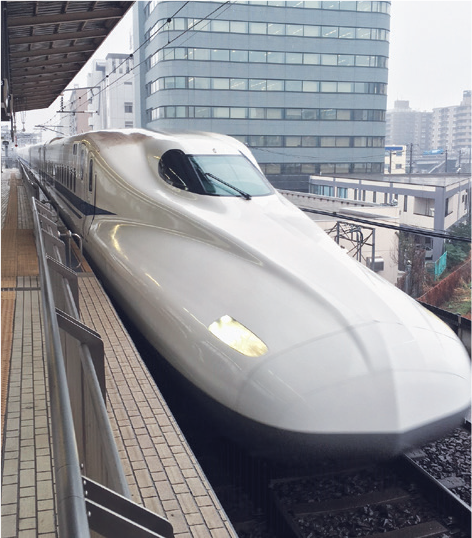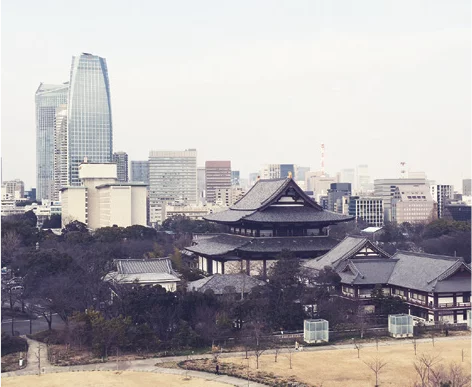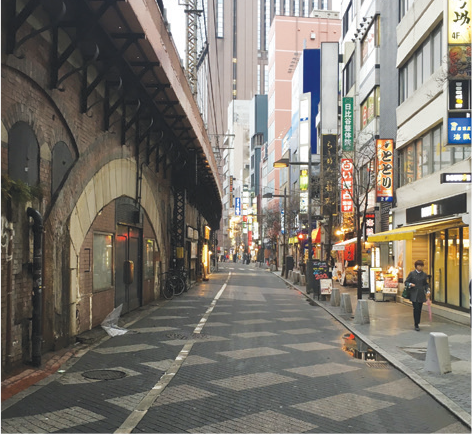Travel plays an essential role in Burgundy’s bottom-up investment research process. Our portfolio managers and analysts regularly travel to find new investment ideas, conduct due diligence on portfolio holdings and build expertise on the geographies where our investments reside. As a global investor based in Toronto, this is particularly important to us – in 2015, our Investment Team held more than 850 meetings with companies in at least 17 countries across North America, South America, Europe and Asia.
We recognize that it may not be entirely self-evident how travel contributes to Burgundy’s end goals of protecting and growing your capital. In this issue of The View from Burgundy, we attempt to describe the types of valuable first-hand experiences that travel delivers, all of which contribute meaningfully to our investment process – and your portfolios.
Most of the examples throughout are drawn from the Asian equity team’s experiences, but conversations with any of our Investment Team members will demonstrate that they all have similar stories to tell.
“Pure logical thinking cannot yield us any knowledge of the empirical world; all knowledge of reality starts from experience and ends in it.”
– Albert Einstein
The Essential Role of Travel in our Global Investment Approach
As investment analysts, we are constantly striving to grow our knowledge of businesses by learning from a multitude of sources. These include company filings, phone discussions with management teams, conference call transcripts and industry publications, all of which are invaluable and necessary in helping us build our understanding of specific companies and industries. However, there is no substitute for physical travel to another location or country to see managers, businesses and economic environments first hand. Company visits add depth and a crucial element of context to the research process.
The insights gained from on-the-ground experience are many, and in this issue of The View from Burgundy, we will describe them across five dimensions: first impressions, face-to-face interviews with management, site tours, knowing the lay of the land and cultural understanding. Altogether, these are the key ways in which we are able to improve our understanding of businesses and their environments when we travel.
FIRST IMPRESSIONS MATTER
The primary purpose of our research trips is always to meet managers in person, with a typical trip consisting of 25 to 30 meetings in a single week. Time is frequently in short supply as we drive from one corporate headquarters to the next, conducting intense interviews with senior managers. On trips outside of North America, both language barriers and jet lag add elements of complexity. But despite the challenges, we find these trips to be instrumental in helping us conduct due diligence and build our knowledge of companies.
There is much to be learned before a meeting even begins. Take, for example, a recent experience in Australia, where we met the management of a large international commodity producer. Standing in the office lobby, we marvelled at our surroundings: gleaming white marble walls, lofty ceilings and an impressive 20-foot-tall black door that automatically (and silently) slid to one side to grant us entry. The environment inside was equally lavish, with lush leather seats, expensive art and even a well-stocked employee bar! While by no means a conclusive analysis, simple observation left the impression that this was not an overly cost-conscious company.
Now compare this experience with a more recent one we had in Japan, where we visited a highly successful, rapidly growing and profitable e-commerce firm. Despite having the means to provide similarly luxurious facilities for its employees, we met the company in its modest head office located above a supermarket. Imagine the contrasting impression this left upon us with regards to how each company views its overhead expenses and shareholders in general.
Q&A WITH MANAGEMENT
Our investment research approach at Burgundy is bottom-up in nature, which means that we make investment decisions based on our understanding of individual businesses and their competitive environments. What we look for are companies that possess quality characteristics, such as high returns on capital, opportunities for growth, strong competitive positioning and excellent management – and when assessing this latter point, face-to-face meetings with managers are indispensable.
Meeting with a company’s senior management in person provides us with a forum for asking questions and airing concerns, and also provides a more thorough understanding of how they run the company. Questions we ask have to do with topics such as capital allocation, competitive dynamics, industry trends and corporate governance, to name a few.
When listening to a management team’s responses, we are first and foremost trying to learn. But we also pay close attention to what their answers say about how they think about the business, such as whether they take a short-term or long-term approach to growing profits and building a competitive advantage, or whether they tend to think conservatively about the business. On this point, what is not said is sometimes just as important as what is. For instance, in Japan we occasionally encounter management teams who, across multiple meetings, will never utter the phrases “return on equity” or “shareholder returns.” What they aren’t saying demonstrates that they do not think about their businesses in a way that emphasizes capital efficiency, which is a knock against them in our quality-value investing playbook.
SITE TOURS (a.k.a. “KICKING THE TIRES”)
Management meetings are not the only on-the-ground tool we use in our efforts to learn more about a business. Another piece of proper due diligence is conducting site tours, in which we visit factories, distribution warehouses, and research and development (R&D) centres in order to flesh out our understanding of how a company works – “kicking the tires,” so to speak. This is often one of the most illuminating parts of the learning process while we are getting to know a business.

Tokyo, Japan
Site tours greatly enhance our ability to understand companies; in the same way that a picture is worth a thousand words, a site tour can sometimes be worth weeks of research done sitting at one’s desk. Simply put, seeing a business or process in action can clarify and add detail to what may be difficult to understand through written sources alone. Many of our “aha” moments occur on site tours, as what was previously confusing becomes clear.
The insights from a site tour can vary, ranging from an enhanced understanding of a business on one end to disturbing red flags on the other. On this latter point, consider a site tour the Asian equity team conducted years ago at a Chinese flavour and fragrance company’s R&D facility. Normally, lab environments are tightly controlled, but in this case, rooms labelled “temperature controlled” had open windows, letting in both the hot summer air and a fair share of local insects. What’s more, the facility was curiously devoid of employees, and the few research staff we did encounter were surly and unapproachable. It seemed odd to us that a company could have its main R&D facility in such a state of inactivity and disrepair, while reporting seemingly world-leading profitability in a highly competitive research-driven industry. Our negative impression from the site tour provided useful information that would have been difficult, if not impossible, to acquire had we not done the on-the-ground work. It prevented us from making an investment in what had appeared on paper to be an attractive business, provided one didn’t scrutinize its operations – an example of why relying on company-produced financial statements alone is not sufficient when conducting due diligence.
“In the same way that a picture is worth a thousand words, a site tour can sometimes be worth weeks of research done sitting at one’s desk.”
Site tours can inform us not just on the business itself, but also on the other companies that make up its value chain. On a recent site tour at a high-end consumer goods manufacturer (and Burgundy holding) in Japan, close inspection revealed that some of the factory automation equipment used in its production line was made by another holding of ours. This allowed us to learn more about the production process, while also hearing invaluable first-hand views about the quality and competitiveness of the automation supplier’s equipment.
KNOWING THE LAY OF THE LAND
While travel is invaluable in growing our understanding of businesses, it also gives us a much clearer perspective about the environments in which they operate and compete. As investors in companies located across the world, from Chile to Belgium to China, it is absolutely essential that we understand the countries in which we do business, and first-hand experience is an essential component.

Tokyo, Japan
Our time spent in foreign countries is always a rich learning experience, even outside of the meeting room or factory. Take, for instance, the phenomenon that is the Japanese convenience store. To someone who has never been to Japan, it can be difficult to understand why 7-Eleven is a thriving business and a leading international example of retailing excellence; written sources do not do it justice. However, even a couple brief visits to a Tokyo 7-Eleven (and a few of their lunch boxes) help make clear that it is a local institution visited not just for packaged candy and drinks, but also for fresh food, airline tickets and day-to-day banking services – all of which drive return visits and enhanced profitability.
Even our more casual observations can add colour to the investment research process. For instance, compare the knowledge gained from reading statistics about the Chinese consumer’s increasing attraction to Japanese products against our experience of actually being jostled by seas of Chinese shoppers in Tokyo’s famous Ginza district. Indeed, experiences that are sometimes uncomfortable or frustrating in the moment can be illuminating upon later reflection.
Our on-the-ground experiences can even occasionally be extreme or dangerous in nature, but no less informative. In March 2011, Burgundy’s Asian equity team was in Tokyo during Japan’s devastating earthquake and nuclear disaster. This provided lessons for local businesses as to the need for disaster preparedness and a flexible supply chain that can recover quickly from such an event, and was a particularly stark lesson for investors about the unlikely but dangerous risks posed to people and businesses in regions prone to natural disasters. What’s more, the experience provided a humbling reminder of how truly unpredictable the future often proves to be, which as investors we can only address by being conservative in our forecasts and by demanding a significant margin of safety in our investments. Lastly, it was a reminder of the resilience and courage of the Japanese people, when many had forgotten how much that matters.
These on-the-ground environmental insights add to our knowledge of business conditions in different countries. The way we see it, the more context investors have concerning their market of focus, the better – it is not a coincidence that each member of our Asian equity team has Japanese or Chinese language skills and has lived in the region for multiple years.

Tokyo, Japan
CULTURAL UNDERSTANDING
Local culture is not to be overlooked in understanding the countries where we invest because it can help provide insights into behaviour, both on the individual and organizational levels. A good example is the 2011 scandal at Japan’s Olympus Corporation, in which the company had hidden more than US$1.5 billion of investment losses during the tenures of two company CEOs. This stemmed from a deeply rooted practice in the firm of not questioning senior executives, common in Japan’s highly hierarchical work culture. Or, conversely, consider Japan’s rapid recovery from its disastrous 2011 earthquake, which was only achievable through widespread co-operation among the state, businesses and individuals for the betterment of Japanese society – reflecting a cultural focus on placing society above self.
“The more context investors have concerning their market of focus, the better.”
Cultural knowledge can play a meaningful role when investing in certain countries, and experienced investors with a stronger understanding of local culture are better able to navigate the resulting idiosyncrasies. For example, it is important to recognize that Japanese societal values are collectivist in nature, focused on producing positive outcomes for all stakeholders. This affects us as investors on a regular basis, because it often means that businesses place clients, employees and society as a whole above the interests of shareholders. As a result, many Japanese companies are corporate citizens dedicated to creating a valuable product or experience for their customers, but who are also insufficiently aware of corporate governance issues. Our role is not to judge or expect rapid change in these values, but rather to understand them, communicate our views with management and work towards better investment outcomes.
CONCLUSION
As investment professionals, the nature of our work is such that we spend a great deal of time reading and thinking; however, we must remember that all useful knowledge is not confined to an annual report. Travelling abroad is an essential element of our investment process because it gives us the opportunity to better understand companies and their environments from an on-the-ground perspective. The unique insights we can gain from these experiences bring our research to life and make us more informed global investors.
This post is presented for illustrative and discussion purposes only. It is not intended to provide investment advice and does not consider unique objectives, constraints or financial needs. Under no circumstances does this post suggest that you should time the market in any way or make investment decisions based on the content. Select securities may be used as examples to illustrate Burgundy’s investment philosophy. Burgundy funds or portfolios may or may not hold such securities for the whole demonstrated period. Investors are advised that their investments are not guaranteed, their values change frequently and past performance may not be repeated. This post is not intended as an offer to invest in any investment strategy presented by Burgundy. The information contained in this post is the opinion of Burgundy Asset Management and/or its employees as of the date of the post and is subject to change without notice. Please refer to the Legal section of this website for additional information.

